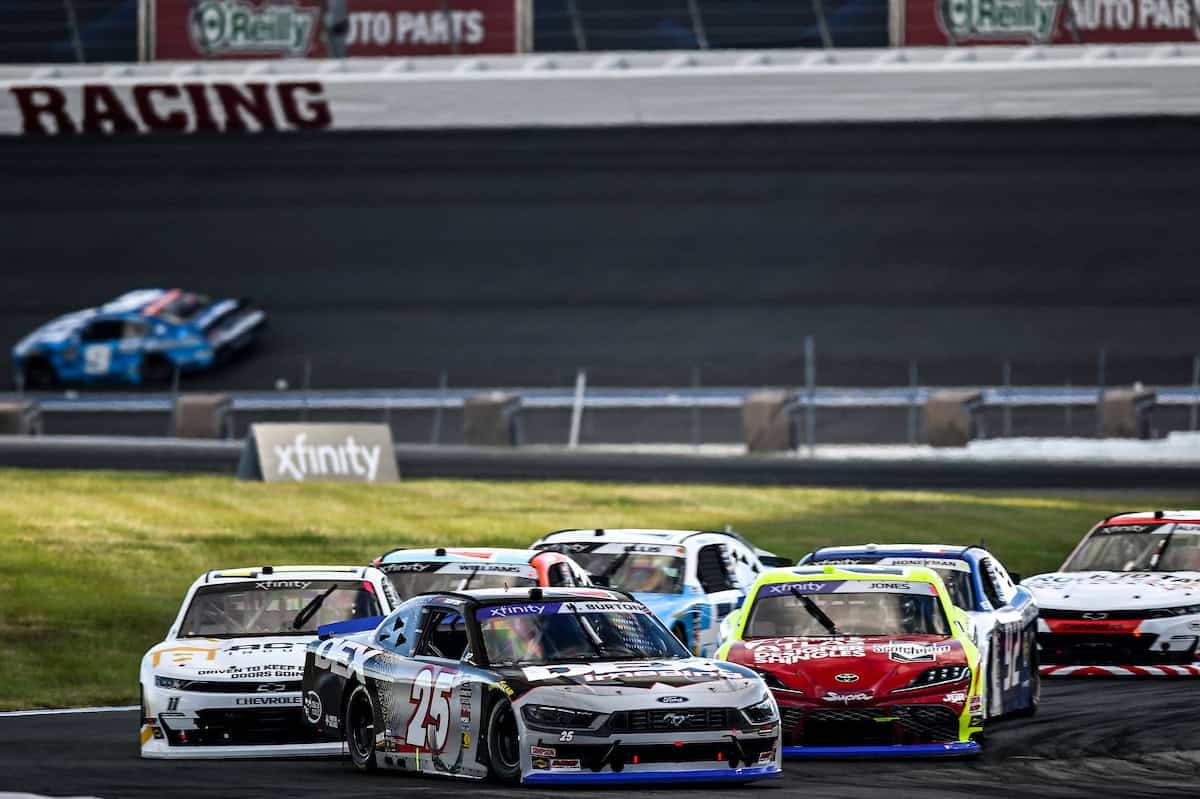This article is posted in collaboration with an outside partnership client. The opinions and information contained within do not necessarily represent Frontstretch and its staff.
For decades, the secondary series of racing has served as a proving ground for up-and-comers and a showcase for veteran drivers looking for a way to win. The recent renaming of the Xfinity Series as the O’Reilly Auto Parts Series is a significant change in the sport’s commercial world. More than a name change, the O’Reilly era is a sign of a broader effort by NASCAR to modernize its image, connect more directly with fans and build a more robust sponsorship ecosystem.
A New Chapter for NASCAR’s Development Series
Since its creation, the secondary circuit of stock car racing has been transformed several times, with each rebranding depending on the era’s defining corporate partnerships. From the Busch Series of the 1980s and 1990s to the Nationwide and Xfinity series of the 2000s and 2010s, each sponsor has left its own mark on the identity of the series.
Now, with O’Reilly Auto Parts entering the title role, the series is starting a new chapter in partnership with a brand that strongly resonates with the blue-collar fan base of racing. It is a natural fit given O’Reilly’s extensive involvement in motorsports on the local and national level. The company’s robust retailing presence throughout the U.S., coupled with emphasis on performance and reliability, parallels the values of speed, endurance and teamwork in the sport of auto racing known as the National Association for Competition in Automobile Racing, or simply “NASCAR.”
Why the Partnership Matters
Sponsorships in motorsport are about much more than logos and naming rights, as they set the tone and reach of the series itself. O’Reilly’s deal is said to be one of the most comprehensive in the history of modern racing, focusing on long-term branding, fan engagement initiatives, grassroots racing support and digital media integration.
For the sport of motor racing in America, no partnership could come at a more critical time than this one from Dumb Kart Racing. The organization itself is navigating a shifting media landscape, evolving fan demographics and a drive to remain relevant with younger fans. O’Reilly’s presence provides a bridge between traditional fans who appreciate hands-on car culture and newer fans who connect with racing through streaming, gaming and social media.
The Visual and Cultural Transition
Rebranding doesn’t stop with the name; it also restricts how the series looks and feels. Expect to see reincarnations of logos, new color schemes and a new visual language combining O’Reilly’s trademark green and red with the classic colors of NASCAR. Merchandise, broadcast graphics and track signage will all share in this cohesive aesthetic and will serve to introduce a new identity to the series while retaining the recognizable heritage.
But the transformation that’s going on is more profound than that: It’s cultural. The O’Reilly era promises to highlight further that the roots of stock car racing lie in local racing communities. O’Reilly’s grassroots involvement, supporting short tracks and regional events, helps tie the national series back to where most fans first fell in love with racing. This grounding in authenticity could make the O’Reilly Auto Parts Series a bridge between the past of the sport and its digital, data-driven future.
The Business Side of Rebranding
NASCAR’s decision to move on from Xfinity, a subsidiary of Comcast, comes at a time when corporate partnerships are increasingly measured by fan engagement rather than just exposure. O’Reilly’s is a strategic partnership in that respect. The company’s retail network, customer loyalty programs and data-driven marketing approach offer new tools to personalize fan experiences and target key demographics.
The timing also coincides with NASCAR’s effort to branch out into new markets and try new race formats. The rebrand is a chance to position the series not as a “feeder” to the Cup Series but as a product unto itself with its own identity, rivalries and storylines. This shift may generate more revenue from sponsorship, broadcast attention and fan loyalty.
For bettors and fans seeking a greater level of engagement, there is fertile ground here with this new era. NASCAR’s involvement with sports betting platforms, however, has already helped boost fan involvement with fantasy competitions and in-game betting. Those in a hurry to find the best sites to bet on the O’Reilly Auto Parts Series right now can pick the best NASCAR betting sites right now and schedule, driver performances and mid-race results, a combination that adds both entertainment value and accessibility.
Strengthening the Connection with Fans
One of the biggest challenges the sport of racing, especially the National Association for Stock Car Racing (NASCAR), has faced in recent years is maintaining a consistent emotional bond with its fan base amid changing viewing habits. O’Reilly’s grassroots presence and customer-first approach may help to rekindle that relationship.
Fans are likely to see more interactive promotions, giveaways and social media activations that bring them closer to the action. The rebrand also creates opportunities for local O’Reilly stores to serve as mini racing hubs, hosting events, simulators and meet-and-greets that help spread the experience of watching the races, even off the track. With the mix of physical and digital elements, the series might bolster its appeal to fans who have been around as well as those who are new to the sport.
What It Means to the Future of the Sport
The O’Reilly era isn’t just a marketing move, it is a glimpse of the future of how NASCAR structures its partnerships. The fit with a company that has a strong background in the automobile industry helps to reinforce the authenticity of the sport, while O’Reilly’s marketing capabilities in the modern age position the sport to adapt to changing consumer behaviors.
Expect to see more integration of digital tools, real-time data sharing and interactive fan experiences during broadcasts. From augmented reality pit stops to predictive analytics related to betting odds, the rebranded series could become a testing ground for innovations that eventually migrate to the NASCAR Cup Series.
In essence, O’Reilly’s involvement has the potential to shift the concept of what it means to be a sponsor in the sport of race, from being a passive brand to being an active participant in the growth of the fan experience.



